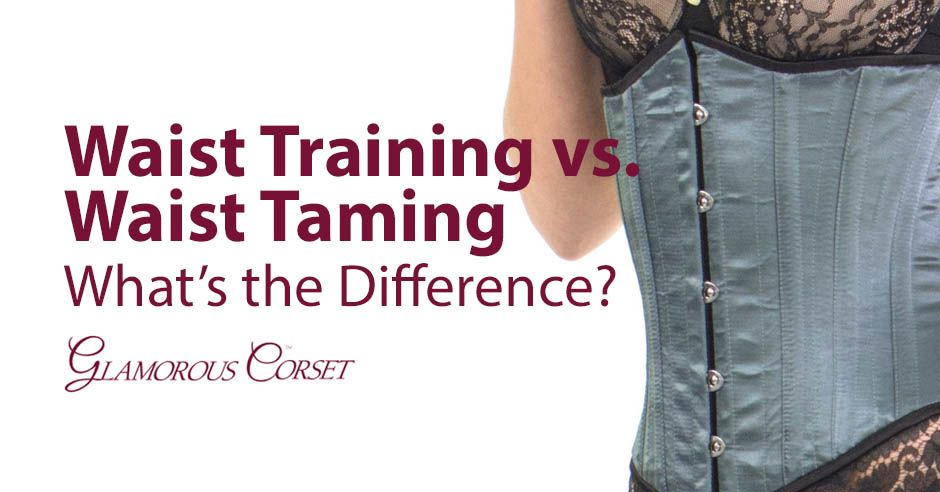Blog
Waist Training vs. Waist Taming: What’s the Difference?
At first glance, you may have a hard time determining the difference between waist training and waist taming. To the casual observer, both the products used and the results may look very much the same.
However, the two practices not only use different products, but the goals and the activities involved are very different. Even so, waist training and waist taming are often confused. Here’s what you need to know.
What is Waist Training?
Waist training involves the use of a corset, specifically a stiff corset with steel boning. This garment can be overbust or underbust and may be worn over or under clothing for anywhere from a couple of hours to a dozen or more hours a day.
The goal with waist training is to create an hourglass shape and over time, reduce the circumference of the waist (i.e. waist size) in a semi-permanent capacity, so that the hourglass figure remains even when the corset is removed.
This is accomplished through “training” the waist. Women interested in waist training will start out wearing a fitted corset for just a couple of hours each day, and with time, they will wear the corset for longer stretches of time and cinch it tighter, eventually swapping in smaller corsets.
The process causes the floating ribs to move inward, creating a smaller waistline. Waist training requires dedication, time, and planning to accomplish the goal of molding the body.
What is Waist Taming?
The practice of waist taming involves the use of a waist cincher. This product is similar to a corset in that it goes around the torso, but it is a stretchy compression garment with a very different feel and function than a corset.
Waist taming is intended to hide belly fat in order to create a smooth, attractive, feminine shape under clothing. The products used are designed for everyday wear in that they are flexible, breathable, and meant to accommodate activity.
Recently, certain celebrities have started wearing waist cinchers during workouts as a way to maintain form, focus on training core muscles, and create a more toned midsection. It may also reduce back pain for some users. Whether or not waist cinchers do all of these things is anyone’s guess, but celebs like Kim Kardashian have certainly made the practice popular.
Why Do People Mix Them Up?
The reason there is such confusion surrounding waist training vs waist taming is the use of terminology, and specifically the word “training”. Celebrities using waist cinchers for the purposes of athletic training have started calling them waist trainers, even though it is an inaccurate characterization.
As a result, many people have started referring to the practice of wearing cinchers for exercise as waist training. This has trickled over into those merely wearing cinchers for superficial, daily body contouring, who now refer to cinchers as waist trainers.
However, waist training is a well-established practice that has nothing to do with hiding belly fat or enhancing exercise. These activities are actually waist taming, and the two should not be confused.
Still have questions about waist training? Contact us! Our staff is always happy to help. For more tips & tricks related to waist training and steel boned corsets, follow us on Facebook & subscribe to our mailing list. Happy corseting!

My name is Rachel, I am the owner of Glamorous Corset, a small business founded by me in 2010. Back In 2005, I was in a car accident that left me with a herniated disk. Much to my surprise I learned steel boned corsets were beneficial to several medical injuries including mine. I was always intrigued with corsetry, their history and their beautiful aesthetic. I love sharing knowledge about corsets, educating my wonderful readers and breaking the negative stigma related to corsetry. In combination with my years of research and personal experience I hope my articles are useful and can help anyone who has struggled with some of the same things I have. More about me…


